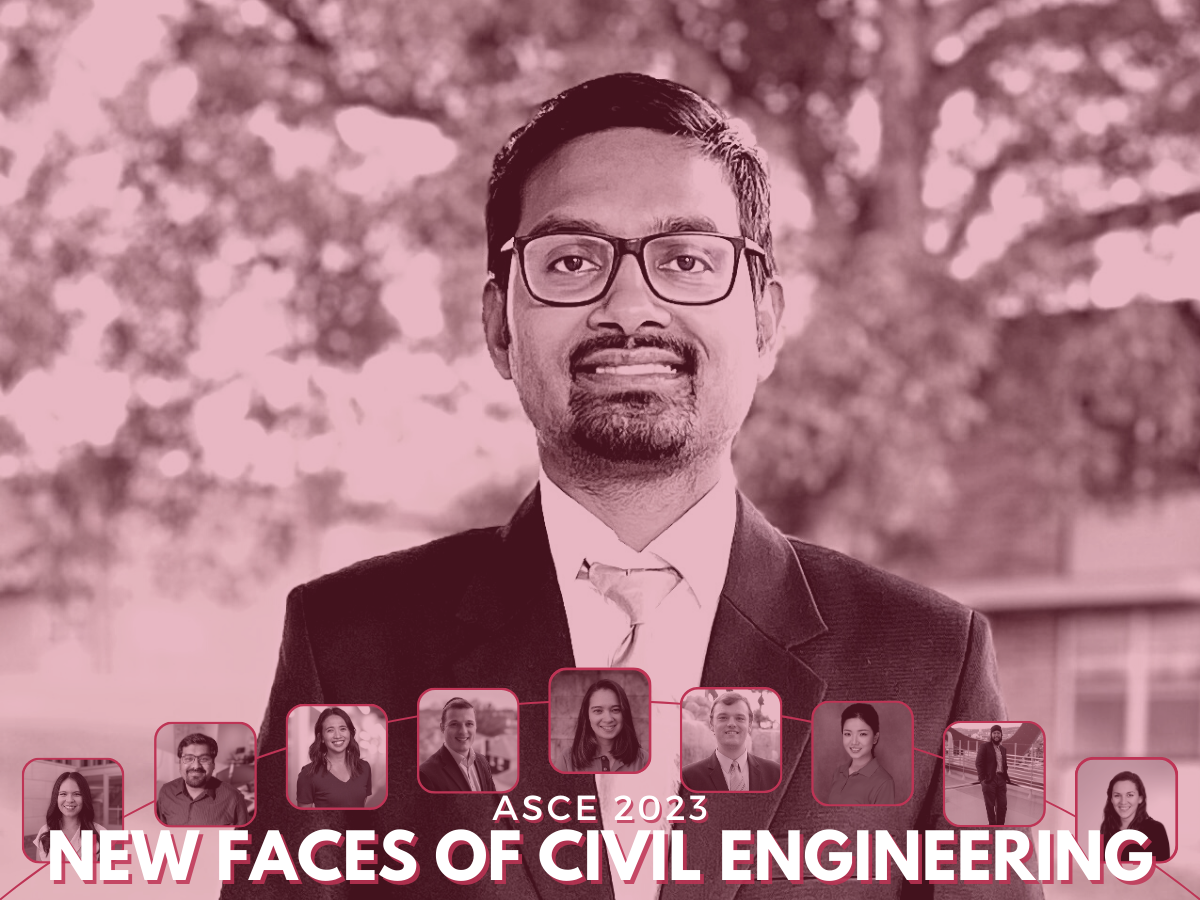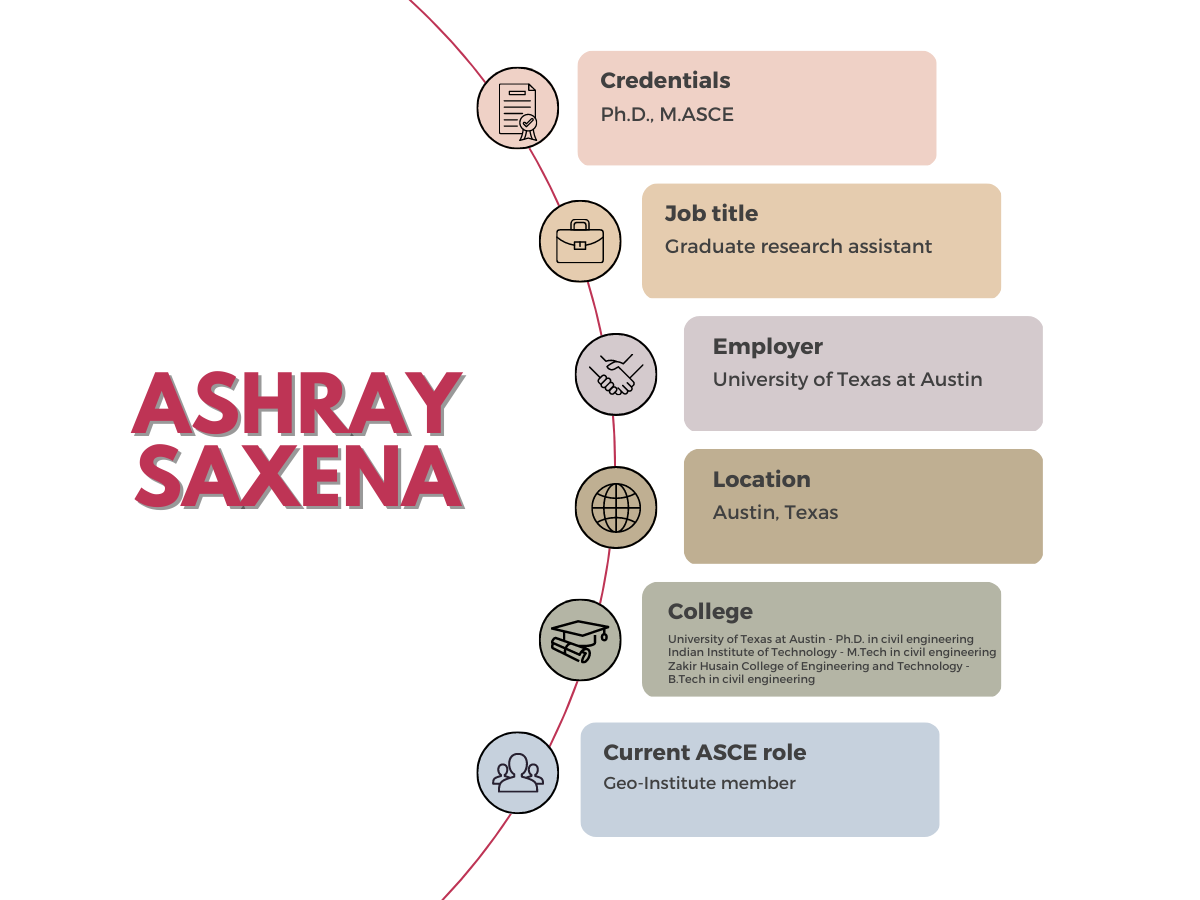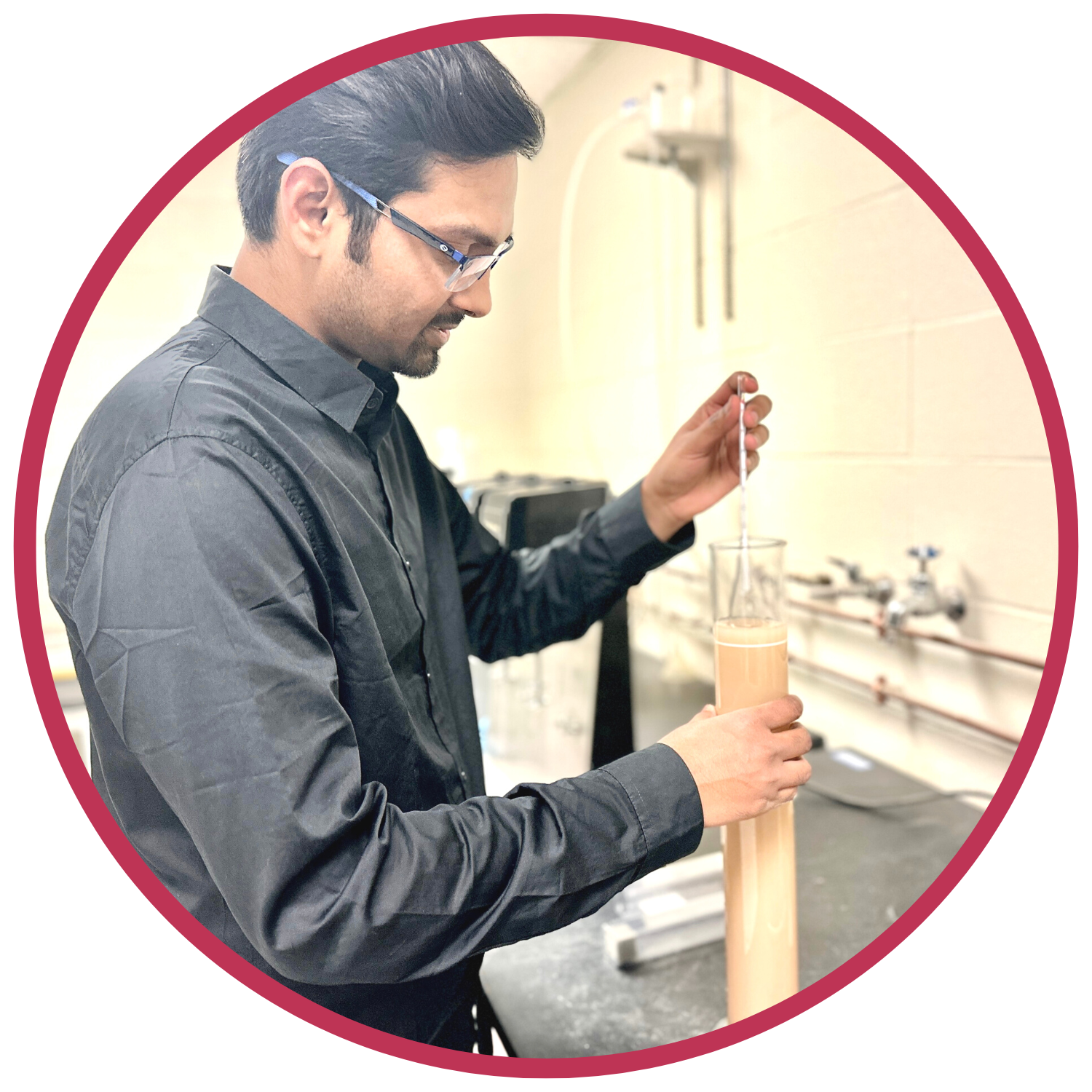

Art, education, and service to society. All three connect to civil engineering.
So it’s a natural fit for Ashray Saxena, a passionate poet, painter, and civil engineering academic.
While growing up in Aligarh, India, he liked to visit construction sites to learn about the design and construction of buildings’ foundations. Back then, he was very interested in understanding the construction of the Burj Khalifa. Currently, he’s working as a graduate research assistant for the geotechnical engineering department at the University of Texas, Austin.
But that’s not all. Saxena is also serving as logistics coordinator for the graduate and industry networking event at UT Austin; is involved in a peer mentorship program; and is DEI chair of the graduate student advisory board of civil, architectural, and environmental engineering. Previously, he served as a small group leader for the International Student and Scholar Services Department of UT Austin and as a judge for the Austin Science Education Foundation.
He’s also received several scholarships and awards for his work, including the Harold H. “Hap” Dalrymple Endowed Presidential Scholarship in Civil Engineering from UT Austin.
ASCE has honored Saxena as a 2023 New Face of Civil Engineering.
“The way we work defines our sincerity, the way we speak defines our maturity, the way we learn defines our focus, and the way we serve defines our will to share,” Saxena said.
It’s a quote he’s written into his life and is eager to follow.
He recently spoke with Civil Engineering Source about his career.

Civil Engineering Source: What accomplishment or aspect of your career are you most proud of so far?
Ashray Saxena: I am proud of two accomplishments in my life.
First – getting admitted into an Indian Institute of Technology. IIT’s are considered the most prestigious colleges in India and have very limited seats. Getting into an IIT requires immense hard work, determination, and strategic and aggressive preparation. You need to be in the top 5%, sometimes the top 2%, of students who apply. After my undergrad, I applied to the Indian Institute of Technology–Gandhinagar and got admitted there for my master’s degree program.
I studied there for two years, where I developed an undying desire and confidence to sweat on various interdisciplinary research. I was very keen on doing some research in the geotechnical and geoenvironmental engineering fields, which helped me receive the Institute Gold Medal in civil engineering (M.Tech).
Second – joining a research group under Jorge G. Zornberg, Ph.D., at UT Austin. When I was applying to different universities for my doctorate, I emailed Zornberg sharing my passion to work with him, and luckily, I received a very positive response from him.
Moreover, before coming to the United States, I applied to numerous universities in Europe, Australia, Canada, India, and many other places as well. I was considering my research interests, and I wanted to know more about the professors I could potentially work with. As a result, I contacted almost 300 professors and received responses from many of them. Finally, after getting admitted to UT Austin, I decided to go with Zornberg, whose research aligned with my future goals.
After coming to UT Austin, I took one of his courses in my first semester and within a week we decided I was going to be a part of his research group.
Working with him is a great opportunity. He provided me with all the platforms to work in the field and laboratories, and to write research articles with different groups.
Source: How do you hope to make an impact on the profession?
Saxena: I categorize the profession into two groups: teaching and research.
Very honestly, I’m utterly passionate about teaching and sharing the concepts of engineering with everyone who is highly interested in this field. So, I taught students belonging to poor backgrounds, without any charge, during my undergraduate and master’s studies. I taught in two high schools and one institute where I learned about the students’ situations, and how they should be treated to develop a passion for study and research. Moreover, I believe that sharing ideas helps in learning and improving skills related to our own or others’ fields.
My mother, who is also a government teacher, helped me to understand the value of knowledge and sharing ideas with others. That’s what led to my enjoyable experience of teaching in schools and institutes, where I received the medal for teacher of the month. Working in heterogeneous classrooms also improved my communication and sociocultural skills.
On the other side, I believe that the second part of the profession is research. Currently, I’m working on research involving transportation and geotechnical aspects. During my undergrad, I learned the basic concepts of pavement materials and different layers of pavement. However, it was only after taking graduate courses that I realized how limited my knowledge was and how much I needed to explore in this vast field of civil engineering.
My heart belongs to India and the United States.
And in India, there’s a huge demand for the development and improvement of transportation systems. So, I would like to bring some revolution over there as well as in the United States. At UT Austin, I’m working on reducing the construction costs of pavements using geosynthetics. It can help save millions of dollars for the transportation industries that would greatly impact the economy of developing and developed countries.
Source: What led you to geotechnical engineering?
Saxena: One day I entered my house and found that one of the rooms [had] sunk almost six inches below the ground. I was in high school when the house was built. But when the sinking happened, I was in my undergrad. It took almost six years for the sinking of the floor. My parents had to spend a lot of money to reconstruct that area. Thus, I decided to dig into what had happened and why. At that time, I decided to seek a higher study with my career in geotechnical engineering to prevent these problems that in the future could be encountered by the houses or buildings in our neighborhood.
During my master’s degree, I learned about the importance of compaction and consolidation of soils. If these aspects are not properly taken care of, then the foundation soil could settle due to the weight placed on them.
Since I learned all this, I decided to help construction sites facing these issues. I visited sites in my local area and guided construction workers. I explained how skipping compaction on-site could lead to serious problems, because over time, soil settles under the load due to reduced bearing capacity.



